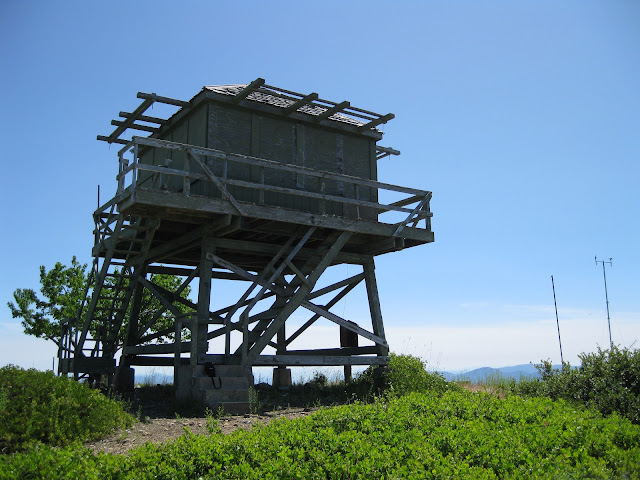
Last week, we took a nice hike to the Onion Mountain Lookout Tower. This is the third lookout station to be placed on the top of Onion Mountain. The first tower was built in 1916 and replaced in 1924. This tower has been here since 1952.
The summit of Onion Mountain, with an elevation of 4,438 feet, offers panoramic views of the surrounding forests and mountains.
Other than a few small chipmunks and lizards, we didn't see much wildlife.
Only eight more years
until this time capsule is scheduled to be opened. It looks like
someone has already tried, or maybe they were after the brass.
The markers from the U.S. Coast & Geodetic Survey in 1943 are in plain sight. These are triangulation points used in calculating distances across our vastly rugged territory.
The markers from the U.S. Coast & Geodetic Survey in 1943 are in plain sight. These are triangulation points used in calculating distances across our vastly rugged territory.
It was the perfect day to sit in the sun and gaze out upon the countryside.
Hiking up the road to the Onion Mountain Lookout tower are clumps of wild rosebushes.
A lovely view on the way up to the top.
At first glance, these
plants looked like some type of succulent or even a mushroom. I've got
to say, these are the most unusual plant I have ever come across!
After we got home, I had
to find out more about these odd-looking plants. Their common name is
snow plant and they have no chlorophyll. The scientific name is Sarcodes sanguinea Torr.
This name translates roughly from Latin to "the bloody flesh-like
thing." It was first described by botanist John Torrey in 1853.
Another unusual plant, the Darlingtonia californica was also described in 1853 by John Torrey. It is found in the Illinois Valley not too far from Onion Mountain.
Located in the Rogue River - Siskiyou National Forest, Onion Mountain is a short drive from Grants Pass or Cave Junction, but you probably won't have to share the trail with anyone else.

















